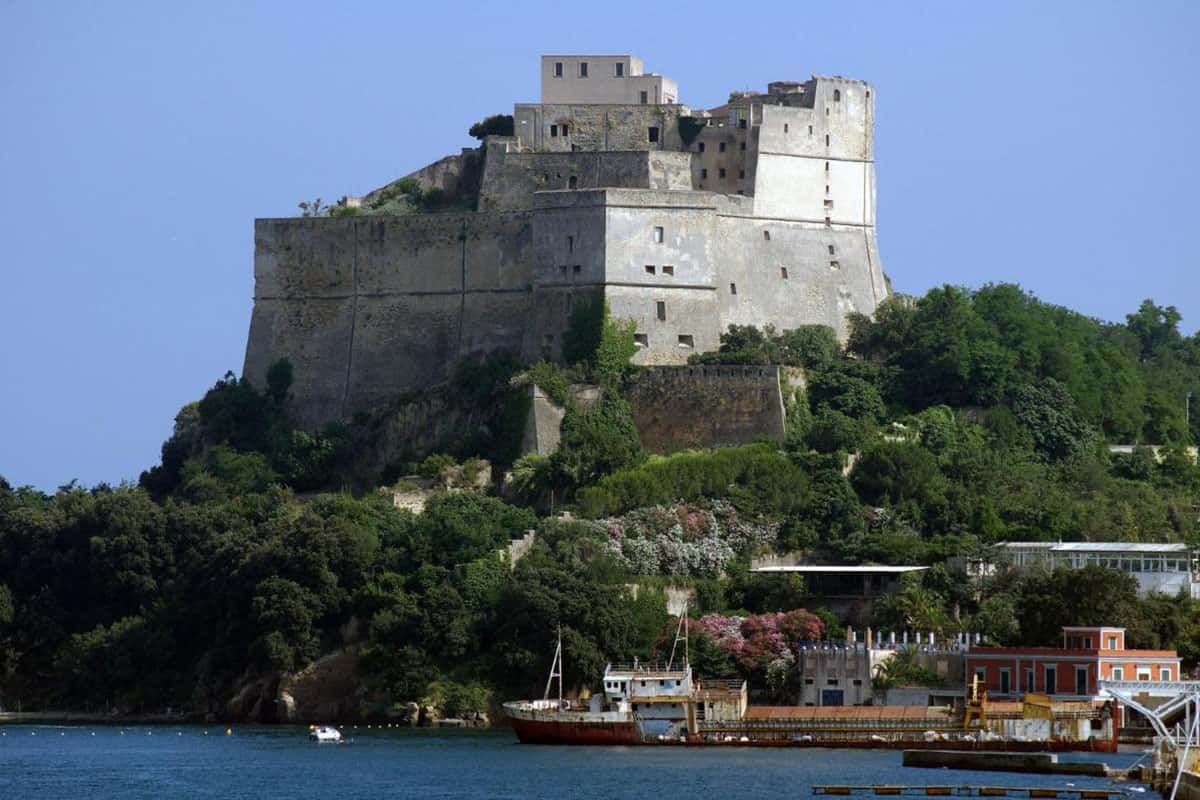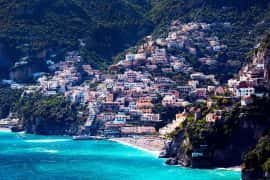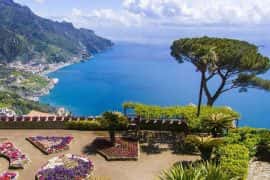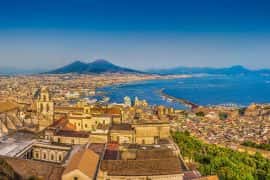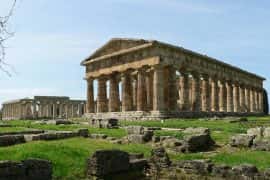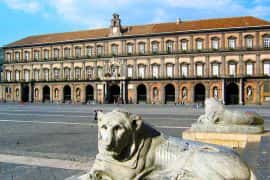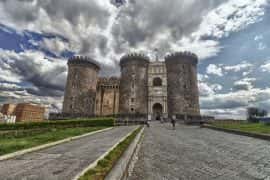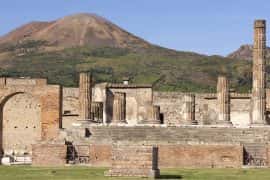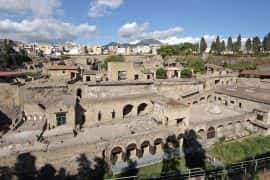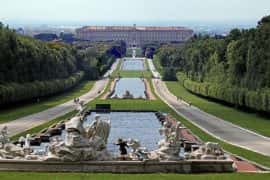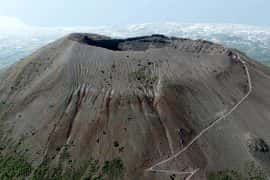Cuma, Baia , Bacoli Pozzuoli and Miseno
The Phlegrean Fields ( “land of fire”, name given by the Greek in the 8th century BC) are a large volcanic area (one of the ten supervolcanoes in the world) know for the phenomena of the soil lifting’s called bradyseism. Declared regional park in 2003, it is situated to the west of Naples. This area is a collapsed caldera,lying mostly underwater and formed by several volcanic edifices and craters (24 total ) which includes the “Solfatara volcano” known for its spectacular fumaroles (effusive gaseous manifestations of sulphur dioxide) , jets of hot mud and very hight temperature of the ground. So here, the volcanic activity is still clearly evident but at the same moment , this is a place considered one of the widest and most fascinating archaeological areas in the world , where history, legend e myth melt into a landscape of sizzling atmosphere.
On this tour with me you will have the chance to visit :
Cuma (archeological park) , one of the oldest Greek colonies in the southern italy , built by the Euboean Greek in the 7th century B.C. and today home to the remains of the first “Magna Graecia colony in Italy. Actually you can visit the acropolis with the Temples of Apollo and of Jove, dated back to the Greek age, and the “Antro della Sibilla” (the Sibilla Cave), reported from the tradition of Apollo oracle, but probably risen for defensives scopes.
The Archeological Park of Baia: a huge area with ruins belonging to a thermal complex from the 1st century B. C, one of the wealthiest Villas where the affluent Romans used to spend their holidays. It also offers monumental thermal baths, a theatre and the remains of a Roman swimming-pool and dining- rooms and recent, underwater , archaeology has revealed many of the fine buildings (Due to the bradyseismic movements the ancient coastal belt experienced collapse – the result being the total submersion of all the buildings which were constructed upon it) ,now protected in the submerged archaeological park.
The Archaeological Museum of Baia housed in the Baia’s Castle , a XV century fortress, that from its strategic position, dominates the bay of Pozzuoli. Inside it’s possible to see the reconstructions of the marble decoration of sites now standing underwater due to the effect of bradyseism. There is also a rich exhibition of findings recovered from all around the Phlegrean area.
The Macellum of Pozzuoli it was the macellum or market building of the Roman colony of Puteoli, now the city of Pozzuoli in southern Italy. When first excavated in the 18th century, the discovery of a statue of Serapis led to the building being misidentified as the city’s serapeum or Temple of Serapis. Here it’s possible to observe the effect of the bradyseism phenomena.
The Flavian Amphitheater located in the ancient Roman “Puteoli”, which was the commercial port of Imperial Times, is the third largest Roman amphitheater in Italy. Only the Roman Colosseum and the Capuan Amphitheater are larger. It is a huge structure once used for gladiator shows and venationes (beasts and gladiators fights) The arena can hold up to 50,000 spectators. The interior is mostly intact and you can still see parts of gears which were used to lift cages up to the arena floor.
(on request) The volcanic Lakes D’Averno, Fusaro and Miseno and the enormous roman cistern called Piscina Mirabilis
Tour Duration:
The tour has duration of 8-9 hours 2 of those for the visit of the archaeological site of the Temples.
Info:
The tour Includes :
– private English/ Spanish / French / Portoguese spoken driver
– Gasoline , Highway tolls and parking
The tour do not includes:
– Entrance ticket for archaeological sites/museums;
– Lunch. Although your driver will be happy to suggest you a typical restaurant depending by you request.
Meeting Location:
PORT: Port of Naples/Salerno Harbour/ Port of Sorrento / Amalfi Harbour.
AIRPORT: Capodichino, Airport in Rome ,
HOTEL: Naples, Sorrento, Amalfi Coast or anywhere in Region.






